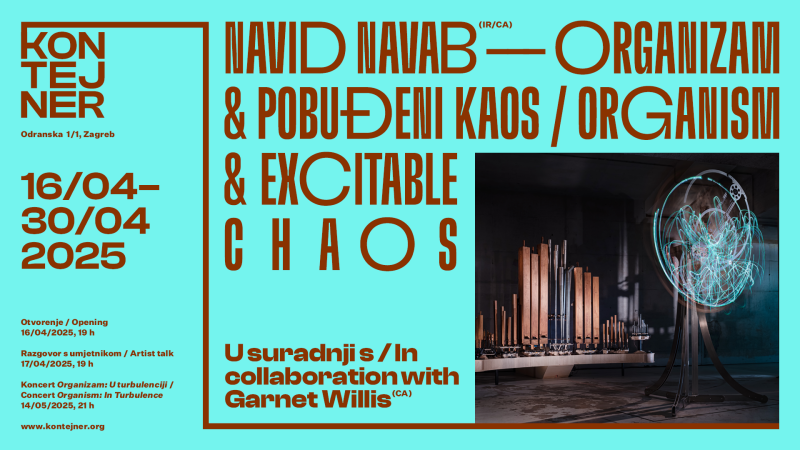It seems as if the world we live in is governed by chaos on all levels—from natural disasters and unpredictable weather events to economic instability and geopolitical turmoil. Uncertainty has become an integral part of contemporary life, even though humans have historically sought to control the phenomena and environments in which they live. Control is seemingly necessary to make things understandable, manageable, and definable. Despite the desire to place the world within a deterministic framework and to be able to dictate even the smallest details, in reality, a system of control as such does not exist—rather, it is unpredictability that drives the world.
Although throughout human history chaos was often attributed to gods or fate—something distant and intangible—modern physics has provided a framework for understanding the world around us. Chaos theory deals with surprises and nonlinear phenomena that are practically impossible to predict or control, teaching us how to expect the unexpected. These laws and concepts of modern physics serve as the foundation and integral part of the latest works by Canadian artist Navid Navab, who, in collaboration with Garnet Willis, has undertaken a research project that intertwines technological tendencies with natural and human elements, with chaos at the center of their experiments.
Navab rescued a pipe organ, built in 1910 by the renowned Canadian organ maker Casavant, from a heritage site in Montreal and brought it back to life by modifying its pneumatic structure. He removed the aerodynamic stabilizations that were once intended to eliminate turbulent airflow and its unpredictable sonic world. In doing so, Navab enabled the resurgence of long-suppressed and silenced tones of the organ. Organism, a robotically prepared century-old pipe organ, is controlled by the kinetic sculpture Excitable Chaos—a robotically steered triple pendulum. Through its chaotic motion, it activates the organ and governs its sonic behavior.
The generative movements of the triple pendulum create chaotic patterns between its three interconnected arms. By modulating its moving elements and dynamically exchanging potential and kinetic energy, different motion systems emerge, allowing the artist to collaborate with chaos—a natural mechanism of formation. This highlights how even the subtlest instabilities at the smallest scales contribute to the emergence of cohesive behavior, whose next state is always unpredictable. The data that the artist extracts from the motion of Excitable Chaos is imprinted onto the aerodynamic thresholds of Organism, shaping its sonic behavior and bringing kinetic chaos into dialogue with sonic turbulence.
Navid Navab: concept, composition, sculpture, programming, design, electronics, sonification
Garnet Willis: engineering, design, sculpture, electronics
Research partners: SAT Montréal with Québec Ministry of Innovation, Topological Media Lab with Fonds de Recherche du Québec, X-IO Technologies UK
Assistance: Camille Desjardins, Charles Bicari, Jean-Michaël Celerier, Asa Perlman, Evan Montpellier, Philippe Vandal, Eric L’Ecuyer, Nick Everette
Production: Transductive Formations
Residency: iii, Werktank, Recto-Verso, Hexagram, Milieux
Support: Canada Council for the Arts, Conseil des arts et des lettres du Québec, Conseil des arts de Montréal, Le Salon 1861
IMPRINT
Organization: KONTEJNER | bureau of contemporary art praxis
Curators: Davorka Begović and Tereza Teklić | KONTEJNER
Technical realisation: Jakov Habjan
Design: Kuna zlatica
PR and communication: Inesa Antić




